Significance
The architecture of Biyun Temple is a mixture of Minnan (Southern Chinese) and Japanese styles. The temple’s jiǎnnián mosaic ornamentation, ceramic sculpture, and granolithic art in the main hall and at the main gate are especially reflective of a local artistic aesthetic. The main gate, dragon columns, lion sculptures, and altar are works of famous masters. The artisans’ efforts in experimenting with granolithic screed as a building medium while maintaining a traditional architectural style are a tribute to their skills and artistry.
History
Located halfway up Zhentou Mountain in the famous Guanziling Scenic Area, Biyun Temple shares the mountain range with another popular attraction—Fire and Water Spring. The abundant underground natural gas reserves in the area have given the temple its full name—Huoshan (Volcano) Biyun Temple. Biyun Temple is also referred to as the new temple by locals to distinguish it from Da Sian Temple (the old temple) at the foot of the mountain. In 1701, Master Shi Ying-xiang brought a Guanyin statue to Taiwan from the famous Kaiyuan Temple in Fujian’s Quanzhou Prefecture. During his search for a place to enshrine the statue and practice Buddhism, he came to the foot of Zhentou Mountain. A Feng Shui (geomancy) expert, Master Shi discovered a location halfway up the mountain that had all the markings of being an auspicious place. He decided that this was a suitable location to settle down and establish a temple. Biyun Temple burned down twice, once in 1832 and again after the First Sino-Japanese War. It also withstood two large earthquakes during the Japanese Colonial Period. Today’s temple structure is the product of the 1934 rebuild. Between 1950 and 1970, the popularity of the Taiwanese folk song “Romance of Guanziling” resulted in Biyun Temple becoming a well-known scenic attraction in Taiwan. In 1997, Biyun Temple, including its Guanyin hall, main gate, and temple square, was classified as a Level Three Historic Landmark. It has also been designated a historic site by the Tainan City Government.
Special Features
1The Layout of the Main Gate The main gate of Biyun Temple is comprised of four walls built in an inverted-U shape using reinforced concrete faced in granolithic screed. Ceramic reliefs of the Four Heavenly Kings are positioned on the upper half of each wall. The lower half, unusually for a temple, is ornamented with ceramic reliefs depicting traditional themes in Chinese art. Instead of the dragons, Qibao pagoda, and deities of the three stars found on the gates of most Taiwanese temples, the roof ridge of Biyun Temple’s main gate is decorated with a sculpture of a grown man and two children standing on a polygonal platform with lion head ornamentation. The mountain gate is faced in granolithic screed, and the artisan used the same material on the brackets supporting the eaves to recreate the characteristics of a wooden structure. Reinforced concrete alone appears plain and flat because it lacks the workability of wooden materials which allow for more creativity. The inscription board that hangs on the inside of the main gate’s central section reads “Small Western Paradise,” a playful take on Buddhist practitioners’ goal of entering the Western Paradise. The architect’s name, Zhou Lao-quan of Anping Township, appears in relief between Biyun Temple’s name board and the lintel. The gate is also one of the most well preserved remaining works of Zhou Lao-quan, a master of jiǎnnián and ceramic sculpture.
The main gate of Biyun Temple is comprised of four walls built in an inverted-U shape using reinforced concrete faced in granolithic screed. Ceramic reliefs of the Four Heavenly Kings are positioned on the upper half of each wall. The lower half, unusually for a temple, is ornamented with ceramic reliefs depicting traditional themes in Chinese art. Instead of the dragons, Qibao pagoda, and deities of the three stars found on the gates of most Taiwanese temples, the roof ridge of Biyun Temple’s main gate is decorated with a sculpture of a grown man and two children standing on a polygonal platform with lion head ornamentation. The mountain gate is faced in granolithic screed, and the artisan used the same material on the brackets supporting the eaves to recreate the characteristics of a wooden structure. Reinforced concrete alone appears plain and flat because it lacks the workability of wooden materials which allow for more creativity. The inscription board that hangs on the inside of the main gate’s central section reads “Small Western Paradise,” a playful take on Buddhist practitioners’ goal of entering the Western Paradise. The architect’s name, Zhou Lao-quan of Anping Township, appears in relief between Biyun Temple’s name board and the lintel. The gate is also one of the most well preserved remaining works of Zhou Lao-quan, a master of jiǎnnián and ceramic sculpture.
2Granolithic Dragon Columns Biyun Temple has two pairs of dragon columns faced in granolithic screed located in front of its main gate and main hall. In contrast to the single color of the stone-carved pillars found in traditional temples, the contours of the dragon columns in front of the main gate are depicted in shades of coral and russet. The dragon columns are further decorated with ceramic sculptures of the Eight Immortals from Chinese mythology–Zhongli Quan, Lu Dongbin, He Xiangu, and Lan Caihe on the left, and Li Tieguai, Cao Guojiu, Zhang Guolao, Han Xiangzi on the right. The sculptures are at once traditional and quite naturalistic. The bases of the dragon columns—traditionally added out of necessity to wood columns using water- and moisture-proof materials—are pumpkin-shaped, while the brackets at the top of the columns were also constructed using granolithic screed. This not only illustrates the master’s adaptation of modern materials to recreate a traditional architectural style, but also demonstrates his artistry. The use of granolithic materials gives the dragon columns in the main hall the illusion of added depth. The beautiful lines make the dragons look so lifelike that, without careful observation, they could almost be mistaken for stone carving. The dragons’ bodies incorporate fine glass, creating a glittering effect through light reflection.
Biyun Temple has two pairs of dragon columns faced in granolithic screed located in front of its main gate and main hall. In contrast to the single color of the stone-carved pillars found in traditional temples, the contours of the dragon columns in front of the main gate are depicted in shades of coral and russet. The dragon columns are further decorated with ceramic sculptures of the Eight Immortals from Chinese mythology–Zhongli Quan, Lu Dongbin, He Xiangu, and Lan Caihe on the left, and Li Tieguai, Cao Guojiu, Zhang Guolao, Han Xiangzi on the right. The sculptures are at once traditional and quite naturalistic. The bases of the dragon columns—traditionally added out of necessity to wood columns using water- and moisture-proof materials—are pumpkin-shaped, while the brackets at the top of the columns were also constructed using granolithic screed. This not only illustrates the master’s adaptation of modern materials to recreate a traditional architectural style, but also demonstrates his artistry. The use of granolithic materials gives the dragon columns in the main hall the illusion of added depth. The beautiful lines make the dragons look so lifelike that, without careful observation, they could almost be mistaken for stone carving. The dragons’ bodies incorporate fine glass, creating a glittering effect through light reflection.
3The Ceramic Guardian Lion SculpturesA pair of blue ceramic guardian lions stand outside the main gate. The blue color isn’t the only unusual thing about them. The male lion, on the left, wears a grin on his face and the lioness—on the right—is chuckling. Perched on two globes and greeting visitors with their delight-inducing smiles, the lions are known as Biyun Temple’s goodwill ambassadors. They have a way of lightening up the mood before visitors even enter the main gate, making Biyun Temple rather unusual among temples in Taiwan. The relief carving on the base supporting the male lion depicts a qilin (an auspicious creature in Chinese mythology that frightens off evil spirits and prevents disasters), while the base of the female lion is decorated with a phoenix. Although constructed using granolithic techniques, the two auspicious animals convey a sense of ancient tradition.
4The Flying Warrior Under the crossbeam of Biyun Temple’s main hall is a pair of carvings of squatting warriors depicted as supporting the crossbeam on their shoulders. Carvings of powerful men supporting the building structure are generally found in temple corners. Such carved men are usually portrayed as laborers—topless and muscular—and their features are generally Western. There are two popular explanations for it: one of them explains it as the Deva King of Daoism, the other as a small act of revenge on the part of the Taiwanese temple builders, and a reflection of their frustrations under the rule of foreigners such as the Dutch in the mid-17th century. They deliberately carved these figures as Western laborers, assigning them the heaviest work of supporting the temple structure. The strong man in Biyun Temple however, is positioned below the beam and sports a pair of wings, leading to his being known as the flying warrior who supports the beam. This wing design is unique.
Under the crossbeam of Biyun Temple’s main hall is a pair of carvings of squatting warriors depicted as supporting the crossbeam on their shoulders. Carvings of powerful men supporting the building structure are generally found in temple corners. Such carved men are usually portrayed as laborers—topless and muscular—and their features are generally Western. There are two popular explanations for it: one of them explains it as the Deva King of Daoism, the other as a small act of revenge on the part of the Taiwanese temple builders, and a reflection of their frustrations under the rule of foreigners such as the Dutch in the mid-17th century. They deliberately carved these figures as Western laborers, assigning them the heaviest work of supporting the temple structure. The strong man in Biyun Temple however, is positioned below the beam and sports a pair of wings, leading to his being known as the flying warrior who supports the beam. This wing design is unique.
5Dragon and Phoenix DecorationsThe dragon and phoenix decorations at the intersections of the dragon columns and the crossbeam in the main hall are some of Biyun Temple’s more remarkable wood carvings. The dragon and the phoenix are divine creatures of Chinese myth. Most of China’s generations of emperors perceived themselves as incarnations of the dragon. The Chinese people also referred themselves as the descendants of the dragon. In general, the dragon symbolizes the male (or yang) element and the phoenix, the female (or yin) element.
6The Rice Cave Biyun Temple was built on a limestone stratum. There is a small cavity in the limestone rocks in front of the temple. According to legend, rice used to pour out of this cave in sufficient amounts for the temple monks to feed themselves. However, one of the monks became greedy and dug out the cave, hoping to get all of the rice. From that time on, the Rice Cave ceased to produce any more rice at all.
Biyun Temple was built on a limestone stratum. There is a small cavity in the limestone rocks in front of the temple. According to legend, rice used to pour out of this cave in sufficient amounts for the temple monks to feed themselves. However, one of the monks became greedy and dug out the cave, hoping to get all of the rice. From that time on, the Rice Cave ceased to produce any more rice at all.
7An Incense Lighter with an Eternal Flame Located on volcanic terrain, Biyun Temple uses Guanziling’s own underground reservoir of natural gas as the source of fire for its incense lighter. The flame has been continuously lit for a hundred years. Nowhere else in Taiwan can an incense lighter such as this one be found.
Located on volcanic terrain, Biyun Temple uses Guanziling’s own underground reservoir of natural gas as the source of fire for its incense lighter. The flame has been continuously lit for a hundred years. Nowhere else in Taiwan can an incense lighter such as this one be found.
8Ceramic Sculpture and Granolithic Screed Pedestals in the Main HallThe ceramic sculptures on the pedestals by the Eighteen Arhats shrine in Biyun Temple’s main hall are naturalistic in design. The portrayal on the left is known as Drunken Taibai, and depicts Li Bai (701 – 762), arguably China’s most famous poet, lying drunkenly beside a tree under the moonlight. The sculpture on the right depicts a Daoist resting on a rock with a book as his pillow. The Garan Bodhisattva shrine and the shrine of the Goddess of Childbirth can also be found in the main hall. Their granolithic-faced pedestals are decorated with the themes “Yue Fei’s Tattoo” and “Fairies and Qilin.” The pedestals are also ornamented with flowers, leaves, pheasants, scrollwork, and antique tableware carvings. Most charming of all are the lion sculptures on the corners of the Eighteen Arhats’ pedestal. The small, grinning lions add an element of whimsy to the pedestal.
Reminders
Facing west, Biyun Temple overlooks the Chianan Plain. Its altitude makes the temple a perfect spot to view the sunset, especially when the red light of the sun’s rays is reflected in the glittering waves. Together, the orange sky and the sea form a stunning sight. It is recommended that visitors arrive after 3:00 p.m. to experience the beautiful view.
Panoramic
Directions